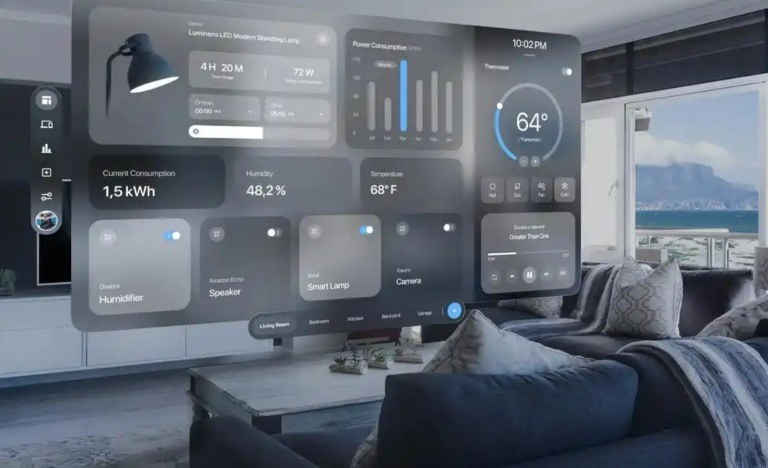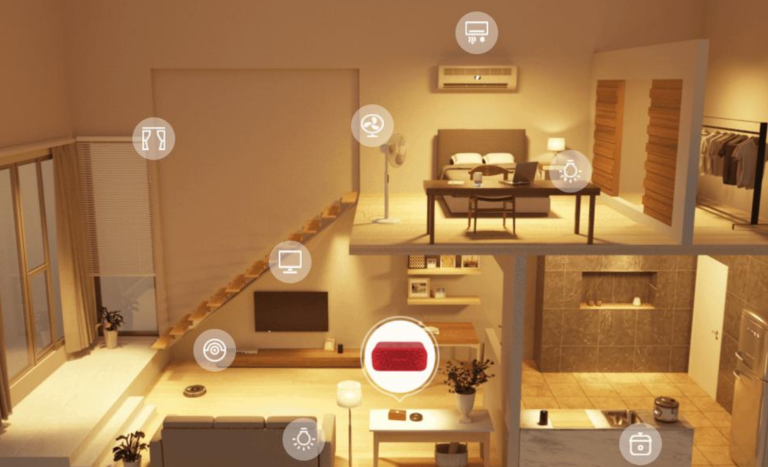

Voice-Controlled Smart Homes: Freeing Your Hands
Introduction: The Rise of Voice Control in Smart Homes
Imagine walking into your home, arms full of groceries, and simply saying, “Turn on the lights and play my favorite playlist”—without lifting a finger. This is the magic of voice-controlled smart homes, where AI-powered assistants like Alexa, Google Assistant, and Siri transform spoken words into actions. Voice control isn’t just a novelty; it’s revolutionizing how we interact with our living spaces, making daily tasks effortless and homes more intuitive.
1. What Are Voice-Controlled Smart Homes?
Beyond Buttons: The Power of Voice Commands
Voice-controlled smart homes use AI-driven assistants to interpret and execute spoken commands. Unlike traditional remotes or apps, voice control offers hands-free, instant interaction—whether you’re adjusting the thermostat, locking doors, or brewing coffee.
Key Components of a Voice-Controlled Ecosystem
- Voice Assistants: Alexa, Google Assistant, or Siri act as the “brain.”
- Smart Devices: Lights, locks, thermostats, and more that respond to commands.
- Connectivity: Wi-Fi, Bluetooth, or hubs like Zigbee for seamless communication.
2. How Voice Control Works in Smart Homes
The Role of AI and Natural Language Processing
When you say, “Alexa, set the temperature to 72°F,” here’s what happens:
- Speech Recognition: Converts your words into text.
- Intent Analysis: AI deciphers the command’s purpose.
- Action Execution: The signal is sent to your smart thermostat.
From Command to Action: The Technical Process
Advanced machine learning models improve accuracy over time, adapting to accents, slang, and even follow-up questions.
3. Benefits of Voice-Controlled Smart Homes
Hands-Free Convenience
Control devices while cooking, cleaning, or cuddling a baby—no need to stop what you’re doing.
Accessibility for All
A game-changer for the elderly or those with mobility challenges. Commands like “Turn off the bedroom lights” replace physical switches.
Seamless Integration with Other Devices
Create routines like “Good Morning” to open blinds, start coffee, and read news headlines—all triggered by one phrase.
4. Popular Voice Assistants and Their Capabilities
Amazon Alexa: The Versatile Performer
- Skills: 100,000+ third-party integrations (e.g., ordering pizza).
- Ecosystem: Works with Ring, Philips Hue, and more.
Google Assistant: The Knowledgeable Helper
- Search Power: Answers complex queries (e.g., “What’s the weather in Tokyo?”).
- Android Integration: Built into phones and Nest devices.
Apple Siri: The Privacy-Focused Option
- HomeKit: Strong encryption for data privacy.
- Limited Compatibility: Best for Apple users.
5. Essential Voice-Controlled Devices for Your Home
Smart Speakers: The Central Hub
- Amazon Echo Dot: Affordable entry point.
- Google Nest Hub: Adds a touchscreen for visuals.
Smart Lighting: Set the Mood with Words
- “Dim the lights to 50%”—Philips Hue bulbs deliver ambiance on demand.
Smart Thermostats: Climate Control at Your Command
- Nest and Ecobee learn your habits and adjust automatically.
6. Setting Up a Voice-Controlled Smart Home
Step-by-Step Installation Guide
- Choose an Ecosystem (e.g., Alexa or Google).
- Connect Devices via their apps.
- Train Your Assistant with sample commands.
Compatibility and Ecosystem Choices
Stick to one brand (e.g., all-Google or all-Amazon) to avoid fragmentation.
7. Privacy and Security Concerns
How Voice Data is Collected and Stored
Voice recordings are often stored in the cloud. Review privacy settings to delete old data.
Protecting Your Privacy
- Disable always-listening modes when not needed.
- Use two-factor authentication for accounts.
8. Overcoming Common Challenges
Dealing with Accents and Dialects
Retrain your assistant by repeating commands clearly.
Reducing False Triggers
Change the wake word (e.g., from “Alexa” to “Echo”).
9. The Future of Voice-Controlled Smart Homes
AI Predictions and Proactive Assistance
Soon, your assistant might say, “You forgot to lock the door—should I do it?”.
Expanding Beyond the Home
Voice control is coming to cars, offices, and public spaces.
Conclusion: Is a Voice-Controlled Smart Home Right for You?
If you value convenience, accessibility, and cutting-edge tech, voice control is a no-brainer. Start small with a smart speaker, then expand—your future self will thank you.
FAQs About Voice-Controlled Smart Homes
1. Can voice assistants work offline?
Basic commands work, but most features need Wi-Fi.
2. Are voice-controlled homes secure?
Yes, with proper settings (e.g., encryption, strong passwords).
3. Do I need multiple smart speakers?
One per room ensures whole-home coverage.
4. Can voice control replace apps?
For most tasks—yes! But apps offer deeper customization.
5. What’s the next big trend?
Emotion detection—your assistant may soon sense your mood.






